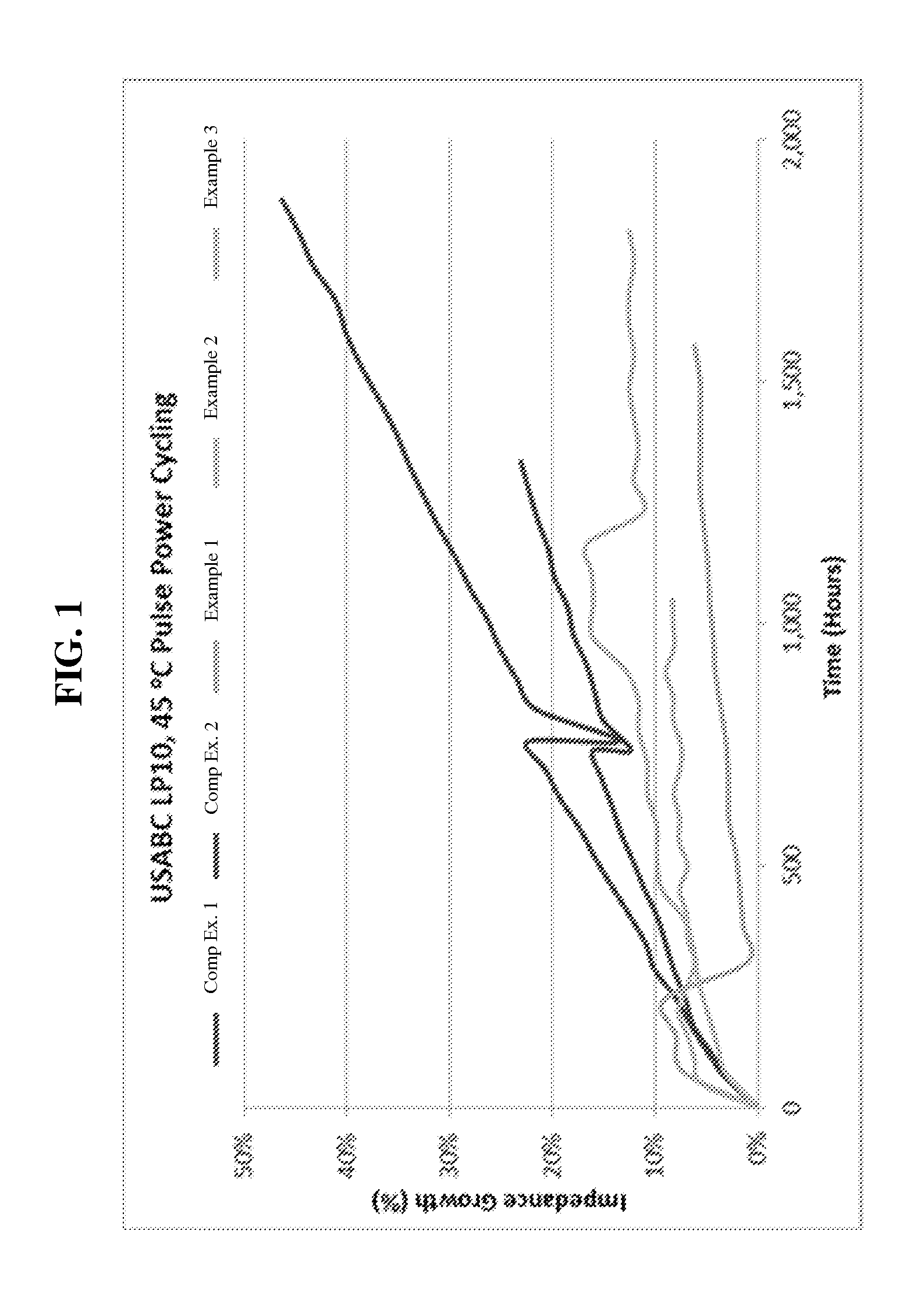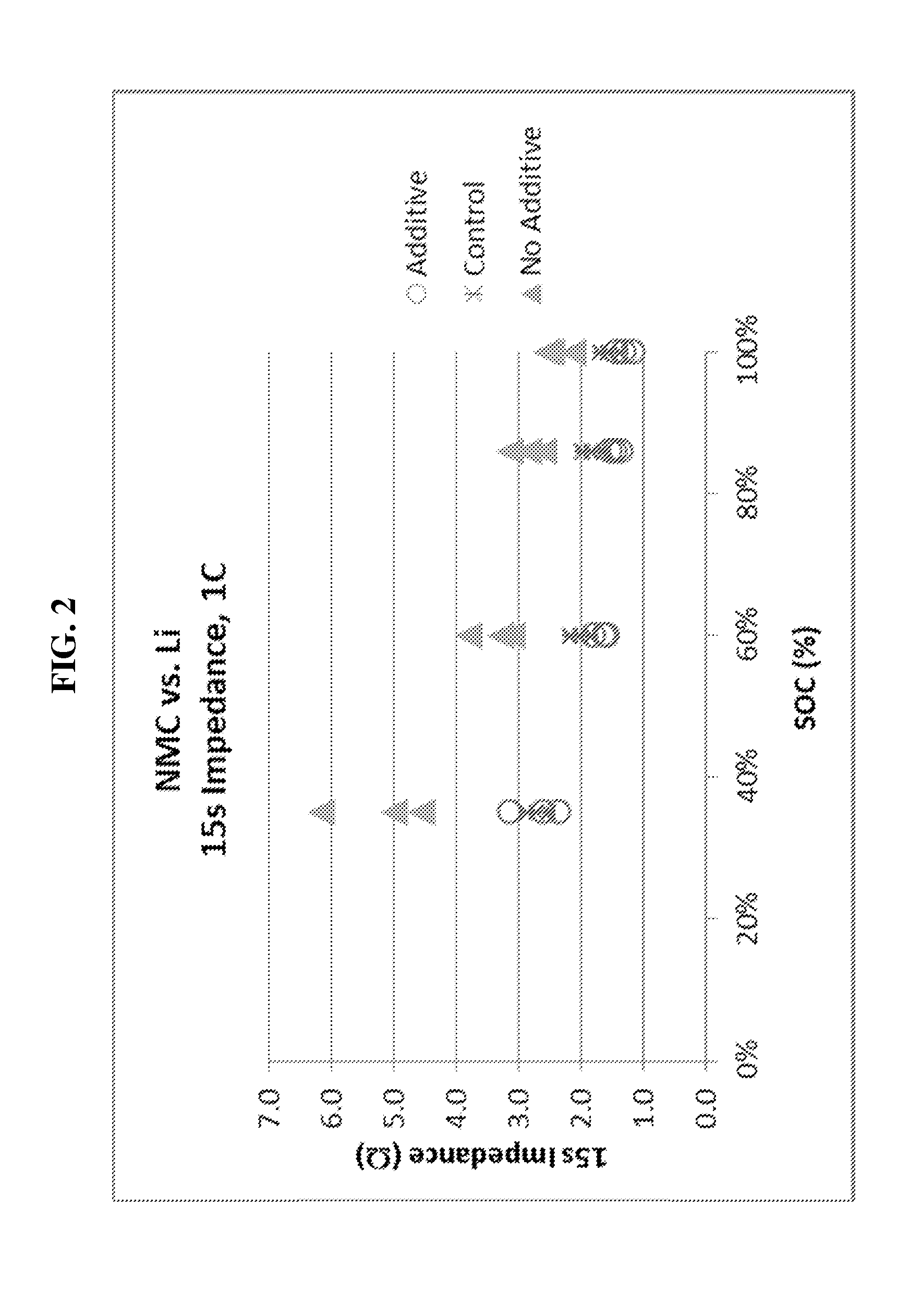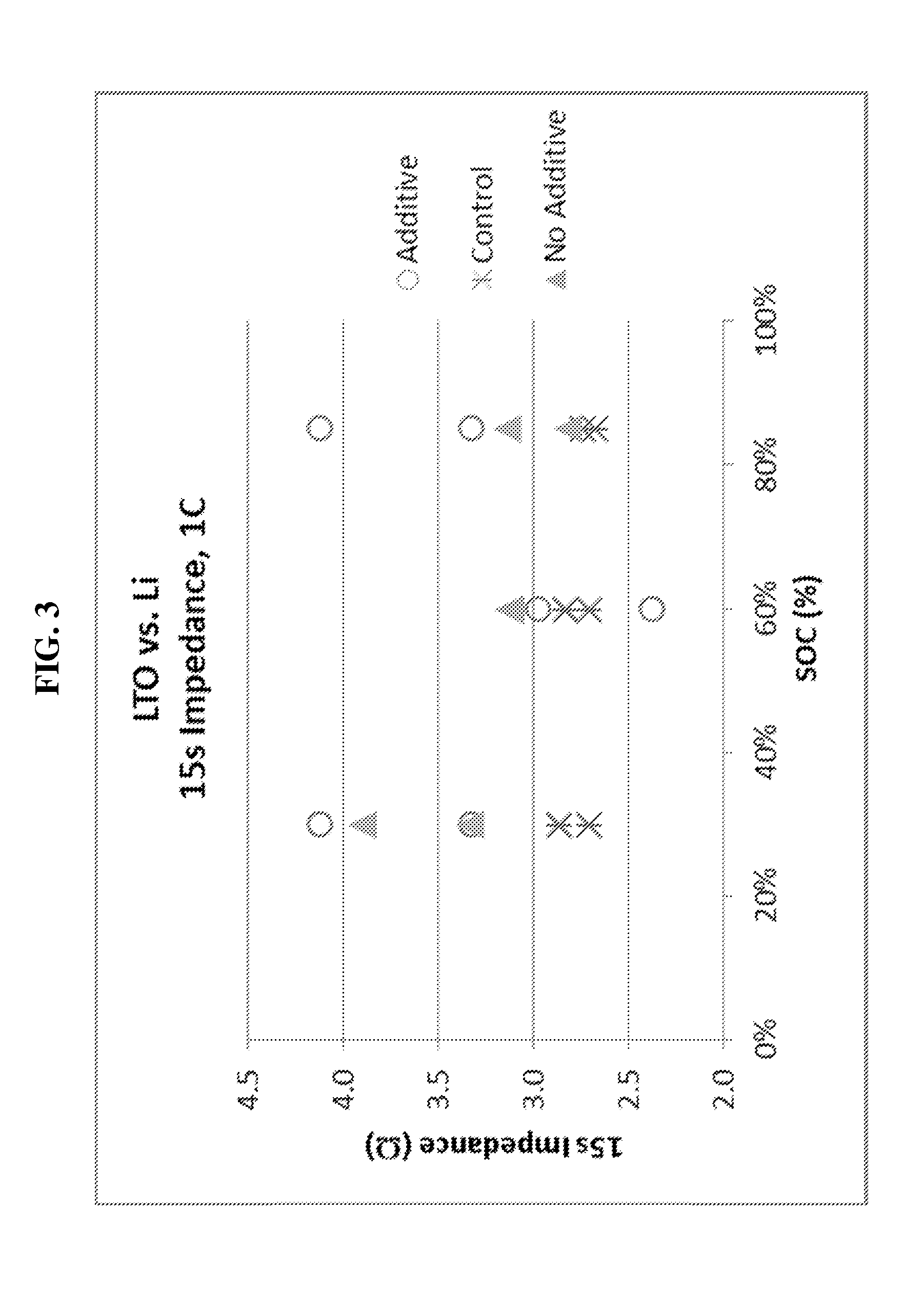Lithium titanate oxide as negative electrode in li-ion cells
a technology of lithium titanate oxide and negative electrode, which is applied in the direction of cell components, final product manufacturing, sustainable manufacturing/processing, etc., can solve the problems of limited operation and storage temperature of lithium titanate cells with lto-based chemistry, increase system and operation complexity, and limit the type of applications and/or the operating environment of lithium titanate cells, so as to improve cycle life and output power capability, the effect of mitigating impedance growth
- Summary
- Abstract
- Description
- Claims
- Application Information
AI Technical Summary
Benefits of technology
Problems solved by technology
Method used
Image
Examples
examples 1-3
[0060]Three 10 Ah prismatic cells with NMC (1,1,1) as the positive electrode (cathode) and LTO as the negative electrode (anode) were fabricated. The electrolyte for each cell contained the following: 1.0 M LiBF4 in PC:γ-BL:EA (1:1:3) with 1 wt % of FEC added. The current collectors of both electrodes were aluminum foil for this cell construction. The negative / positive ratio was less than 1. The cells were then subjected to a first formation cycle, during which the potential of the negative electrode versus a lithium standard was maintained at 1.1V or less for 1 hour.
[0061]During the first formation cycle, a stable interface layer including a LiF deposit material was formed on the negative electrode. The cells were then cycled at 45° C. under USABC pulse cycling profile: at 50% state of charge (SOC, 2.3V), discharge for 59 seconds at 1.3 C, followed with 1 second discharge at 6.5 C; charge at 2.7 C to 50% SOC (2.3V). The impedance growth vs. time (in hours) is provided in FIG. 1.
PUM
| Property | Measurement | Unit |
|---|---|---|
| operating temperatures | aaaaa | aaaaa |
| temperatures | aaaaa | aaaaa |
| temperatures | aaaaa | aaaaa |
Abstract
Description
Claims
Application Information
 Login to View More
Login to View More - R&D
- Intellectual Property
- Life Sciences
- Materials
- Tech Scout
- Unparalleled Data Quality
- Higher Quality Content
- 60% Fewer Hallucinations
Browse by: Latest US Patents, China's latest patents, Technical Efficacy Thesaurus, Application Domain, Technology Topic, Popular Technical Reports.
© 2025 PatSnap. All rights reserved.Legal|Privacy policy|Modern Slavery Act Transparency Statement|Sitemap|About US| Contact US: help@patsnap.com



